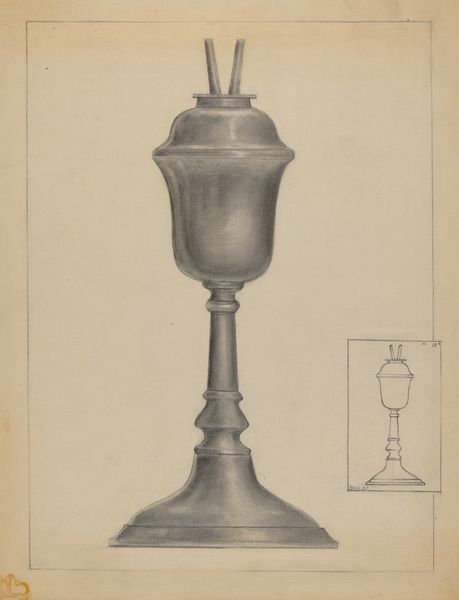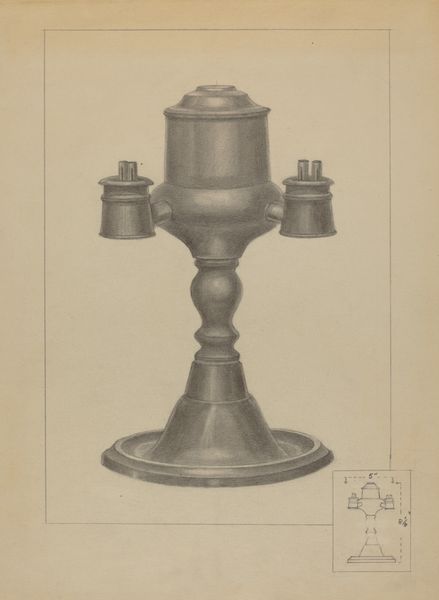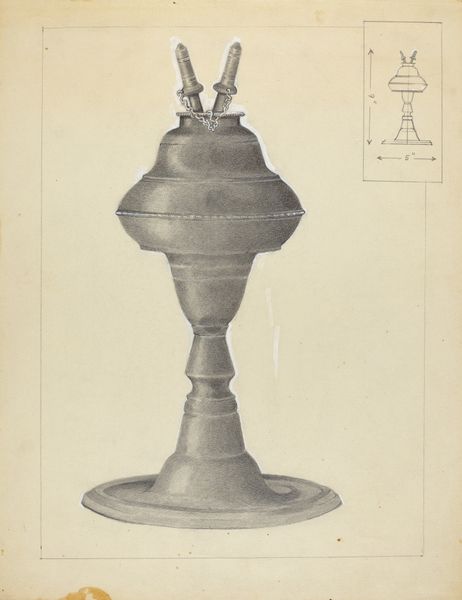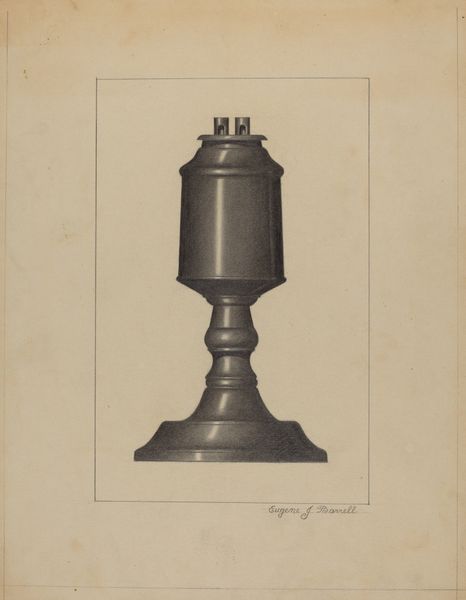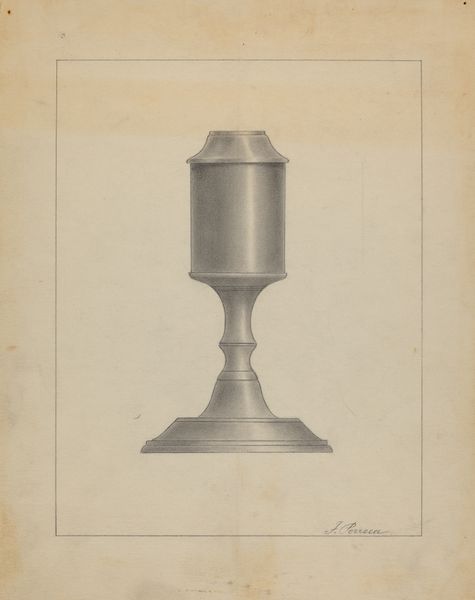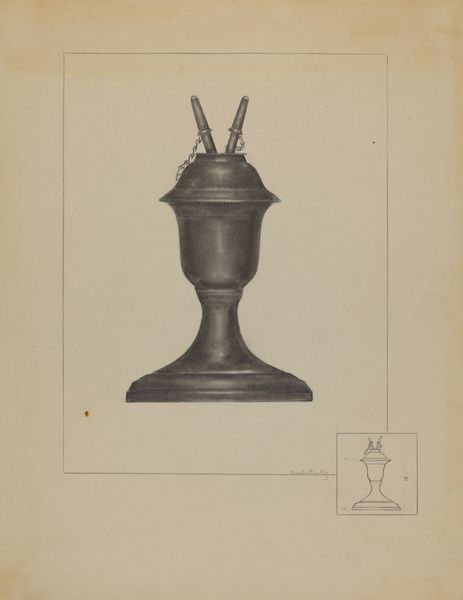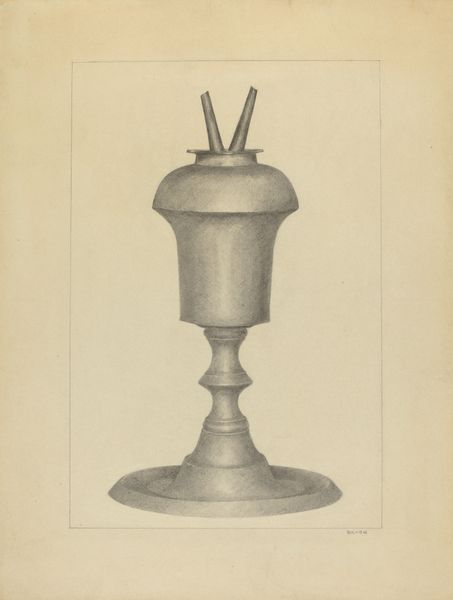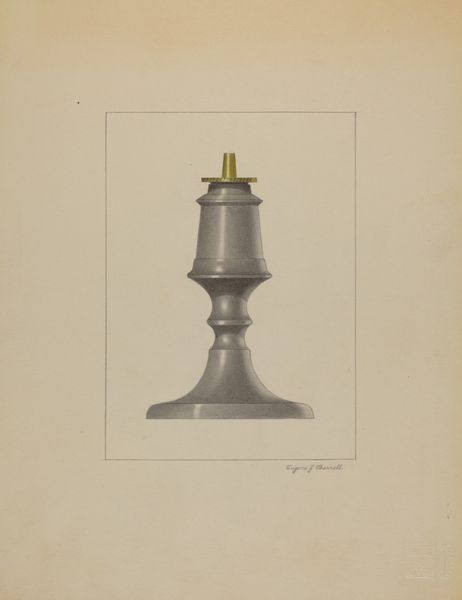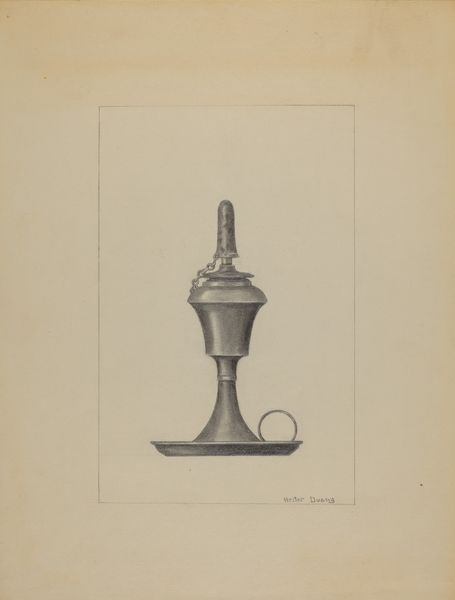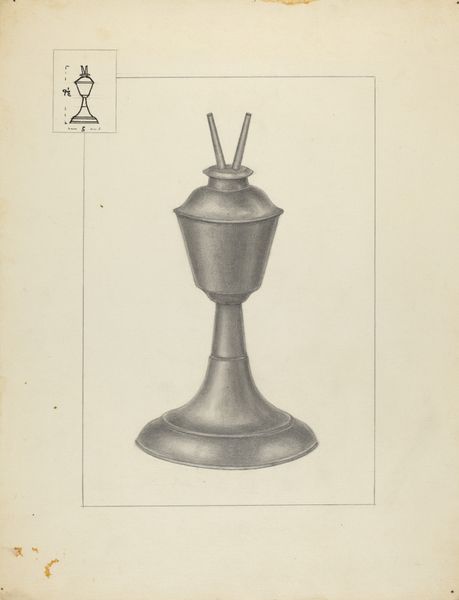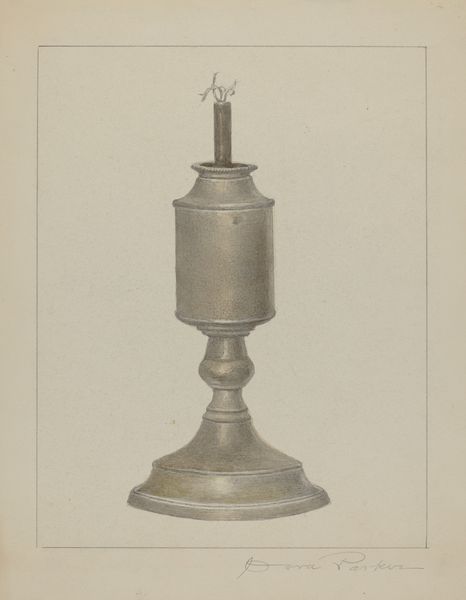
drawing, paper, pencil
#
drawing
#
paper
#
pencil
Dimensions: overall: 30 x 22.4 cm (11 13/16 x 8 13/16 in.) Original IAD Object: 8 3/4" high; 3 3/4" in diameter
Copyright: National Gallery of Art: CC0 1.0
Editor: This is Joseph Stonefield's "Whale Oil Lamp," a pencil drawing on paper created between 1935 and 1942. I'm struck by its smooth gradations of light and shadow. What catches your eye, looking at this piece? Curator: Well, immediately, I consider the cultural context. Whale oil lamps were crucial to illumination, especially in coastal communities. The ethics surrounding whaling and whale products shifted dramatically throughout the 20th century, influencing how objects like these were viewed and valued. What statement, then, is being made when, during this pivotal moment of that changing history, Stonefield memorializes one in art? Editor: So you're suggesting it might be more than just a simple drawing of a household object? Curator: Precisely. Art doesn't exist in a vacuum. The social landscape, economic factors, even political discourse—all influence its creation and reception. Considering the historical importance of whale oil to economies of this period and how that shifted, it is interesting how the lamp is divorced from use and refigured through this memorialization as solely an aesthetic object for display. Who had the power to define "art," and how did that shape our understanding of everyday objects? Editor: It's like Stonefield's drawing is raising a quiet protest about consumerism and its cost? Curator: That’s one compelling reading. It prompts us to consider who traditionally gets represented and whose labor is deemed worthy of artistic interpretation. It also seems to imply that objects which once provided are now a memory for contemplation only. What do you think the inclusion of the measured line drawing on the bottom right represents? Editor: Perhaps a contrast between art and functional design? A reminder of industrial progress perhaps? Curator: Precisely, I found this conversation insightful; it encouraged a thoughtful examination of an seemingly commonplace object through a broader socio-historical lens. Editor: Me too! I had never considered that simply depicting the drawing's creation during the beginning of whaling backlash could reframe it as an environmental statement.
Comments
No comments
Be the first to comment and join the conversation on the ultimate creative platform.
